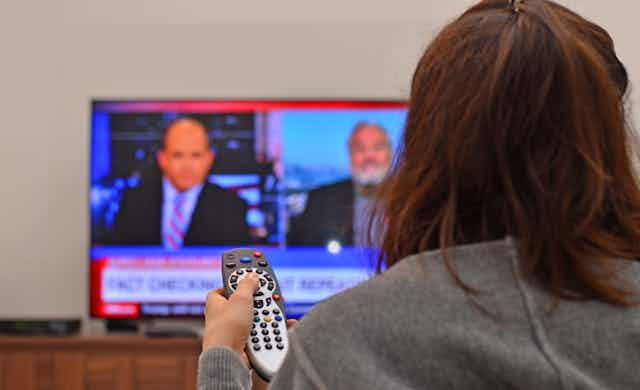When it comes to the news these days, what we choose to regard as trustworthy has more to do with our own world view than what kinds of news practices are worthy of trust.
Many people are seeking out news that aligns with their politics. But there’s just one problem with this: we are not always good judges of what constitutes trustworthy information and news.
That’s why learning about news and information literacy is so important. An information literacy course I teach at the University of Windsor, Information Searching and Analysis, tries to show students that the same phenomenon which makes us poor judges can also be turned around to make us better, more critical consumers of news and information.
The process I use in this information literacy course does not encourage “trust” in mainstream or legacy news media per se. Rather, students learn to assess news based on the characteristics of a news story: multiple, adversarial sources, the use of statistics and data in which the sources are named and can be accessed independently, the kinds of advertising present and whether it is related to the story.
First lesson: Check your confirmation bias
Confirmation bias suggests that our prior knowledge and experiences often inform our opinions. However, by becoming aware of our confirmation bias tendencies, we can begin to self-critique the way we process information and learn more about ourselves and how we interpret news and information.
The solution comes in the form of an experiential assignment in which students realize their confirmation bias tendencies. Students are tasked with a weekend assignment in which they look for and report on examples of confirmation bias around them and in media reports. They are told to focus mostly on themselves — how they often engage in confirmation bias.

The assignment is an eye opener. In their end-of-semester papers, 80 per cent of students in the Information Searching and Analysis class noted that the assignment was an important element of the course. Here are a few examples:
“I knew that in some aspects of my life, I may have exhibited confirmation bias towards certain ideas. However, I did not think it was as prominent as it was after the completion of the assignment.”
“…relating to my personal life, this was the most important assignment.”
“I think it was the most impactful and (will) stick with me the longest.”
“It was an insanely enriching experience for me to pull my biases out of the woodwork, particularly for someone like myself who regards themselves as quite unbiased when it comes to anything.”
“…extremely valuable was the consciousness I developed in regard to (how) social media was exclusively forming my opinions… I believe this is perhaps the most universal function of the class.”
The course uses a flipped classroom approach. Flipped classrooms use class time for discussion, group activities and experiential education instead of lectures and passive forms of learning.
The key is self-confrontation. All the ways to engage in confirmation bias cannot be conveyed through a dry explanation of the concept. The point is to not preach or lecture them about their “faults.” Rather, it is about letting them understand for themselves how confirmation biases can result in inaccurate learning that may have negative effects.
Media framing
Over the rest of the semester students explore a social justice issue by looking at how interest groups, journalists and academic researchers have treated the issue. This serves to give them a holistic view of the information field and leads to a better understanding of both the issue and the social dynamics that inform debate about it.

It is also crucial that students understand the nature of sponsored content and other native ads which may look like news but embed a point of view.
News, information and misinformation play a significant role in improving and undermining democratic discourse and decision-making. Educators at all levels will need to give news and information literacy greater attention to ensure students know how to critique the news they encounter.

